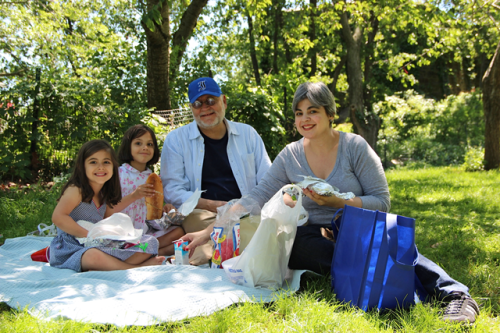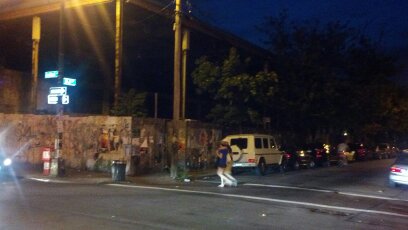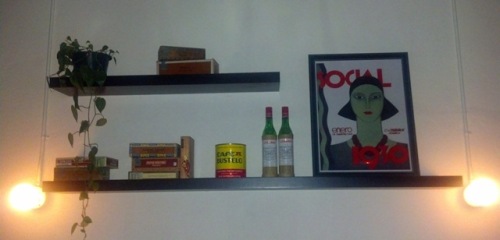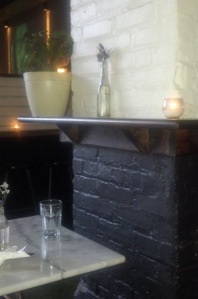Tonight is nochebuena. I would like to share with the readers of cubanewyorker an essay I wrote about my own nochebuena tradition. The Miami Herald published it exactly twenty years ago today. In the years I served as Contributing Editor of the Herald I authored dozens of op-ed essays, most of them analytical and commentary pieces, but few garnered as much attention as this very personal one. For several reasons, also personal, I thought that the essay’s twentieth anniversary was a good time to send it into the blogosphere and share it with many who did not read it two decades ago, and even with some who did. I have added a postscript with updates.
The Tradition of Nochebuena
The Miami Herald, December 24, 1992, p. 11-A
When family and friends ask me what I want for Christmas, I never know what to say. The truth is, every year I give myself what I truly want for Christmas: the privilege of cooking, with all the trimmings, a classic nochebuena (Christmas eve) feast.
I don’t know if there are a lot of Cuban men, especially of my generation (those who arrived here as children) who can do that. But I can, by memory, without any written recipes. It is a skill that I treasure, one that I acquired after a long and cherished apprenticeship.
Cooking the nochebuena dinner allows me to continue a tradition. Every year on the eve of Christmas my children are exposed to the same tastes, sights, and aromas that I experienced as a child.
I appreciated this more after reading a few years ago the reminiscences of José Yglesias, the noted writer, about nochebuena in the Ybor City of his childhood. He moved away from the Tampa neighborhood as a young man but returned one Christmas many years later with his grown children. The smell of the roast pork and the simmering black beans brought back a flood of childhood memories, and he regretted that it was an experience that he had not shared with his children as they were growing up.
But keeping a tradition alive for my children is only one of the reasons why it is important for me to cook the nochebuena feast every year. Another one, perhaps more important, has to do with how I learned to do so.
There are people who believe that their mothers are (or were) the greatest cooks in the world. Those people are wrong. My mother was the world’s greatest cook. That was true during her entire adult life. As one of my aunts once put it, “Nancy was a great cook. Not just now, but always.” What she meant was that my mother was a great cook even in Cuba, where she had someone to cook for her and she didn’t have to go into the kitchen every day. I remember that she would teach the cook how to cook.
And she was a perfectionist. When she had to cook every day here in the United States, she couldn’t bring herself to put just anything on the table, even on the days when she worked a full day outside the house.
Nochebuena was special to her. All the family and relatives would gather at our house in Hialeah, and she cooked for all of them. Because she was such a perfectionist, she usually preferred to handle everything herself.
But eventually that became progressively more difficult. Multiple sclerosis kept her from moving around her kitchen or standing for long periods of time. She started needing help with nochebuena. Since I had always shown an interest in her cooking skills, I was the logical helper. If I had a sister, I might have missed the opportunity.
At that time I did not live in South Florida, but I had to manage to be home for the holidays before December 22, when the nochebuena preparations got started. It’s the day when the beans are soaked, because the recipe calls for them to be cooked on the following day, the day before being served.
She insisted on that particular recipe, Black Beans Valdés-Fauli, a family tradition. Every year she would remind me that, although the recipe bears the name of our distant relatives, it was really developed by her grandfather, an excellent cook and a colonel in the Cuban independence army. Her message, just in case I had reservations about donning an apron, was that manhood and cooking are not contradictory, and that her family has a tradition of great male cooks.
With each passing year, her condition deteriorated and my apprenticeship intensified. At first, I was just handing her things and observing. But on her last nochebuena, it was clear that I had learned well. I did everything, while she had to content herself with merely supervising from her wheelchair, making sure that not a step was missed, no corners cut, nothing forgotten, constantly testing me, reminding me.
“Remember, when marinating the pork, there is no such thing as too much garlic . . . Did you put the tablespoon of sugar in the beans? It’s a critical ingredient . . . If we have 17 people, how many cups of rice? And cups of water? It’s time to open the pressure cooker and surprise the yuca with cold water . . . Remember not to heat the mojo with the juice in it . . . Just before serving pour the hot olive oil and garlic into the cold juice . . . Don’t forget to stand back when you do that.”
This is the tenth nochebuena without my mother. I continue to cook the dinner strictly by memory, following each step exactly as I learned it. It is a ritual. I believe that even if someday I have the misfortune of finding myself alone on Christmas Eve, I would probably still go through the whole thing.
No, I don’t want anything for Christmas. All I want is to cook the nochebuena dinner. I get to keep alive a tradition for my children, and I get to remember my mother.
Who could ask for more?
2012 updates:
I no longer do the yuca. I was never a fan, and it’s the most laborious dish on the menu and the hardest to get just right.
So far, I have not had to spend nochebuena alone, in fact, I’ve been very lucky (and grateful) in terms of companionship.
Moving to New York nearly three years ago but returning to Miami to spend the holidays has disrupted the nochebuena tradition a bit, but I still insist on cooking the meal during the season, even if not always on nochebuena itself.
I have succeeded in passing on to my sons the nochebuena tradition, but only in eating it, not in preparing it. But I harbor the hope and expectation that when my two granddaughters are old enough they will both join me in the kitchen for Christmas and I can pass on my mother’s nochebuena secrets. This posting is dedicated to Gabriela and Paula.
Feliz Navidad a todos.














